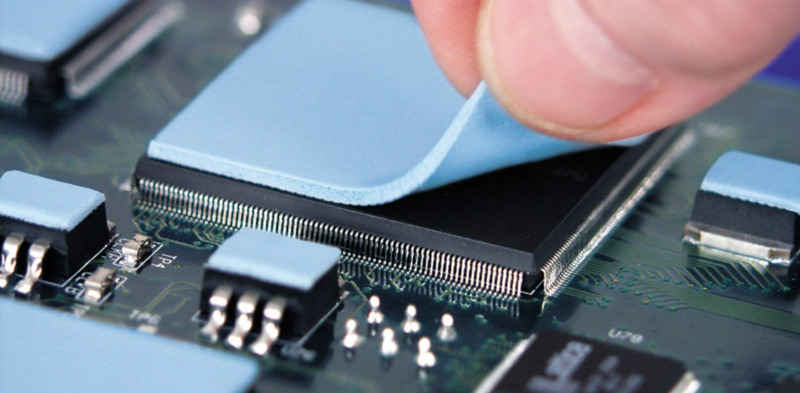
Here’s What You Need to Know about Thermal Interface Materials and why it is making a wave in the industries. As we are living in the 21st century, the world of digitalization, there is huge utilization of smartphones, tablets, desktops, and laptops. This tends to increase the manufacturing of such devices and all these electronic devices are installed with Thermal Interface Materials to protect them from the damaging effect of the heat produced by them. The growing automotive industry in developing is another factor that is driving more deployment of TIMs in the manufacturing sectors. In addition to it, an array of thermal interface materials are already available in the market that is encouraging its application in the manufacturing of different electronic devices.
Thermal Interface Materials are those that have high thermal conductivity. They dissipate the heat produced from a source to the sink and thereby acts as an interface medium. These Materials are used between two hard surfaces for the conduction of the heat generated. They are widely used in modern electronic devices such as CPU, hard disks, LED, graphic cards, microprocessors, chipsets, etc. As the management of heat dissipated from these devices is important for maintaining the longevity, reliability, and overall performance of the electronic devices. Owing to its improved heat transfer capabilities, they play a vital role in the electronic industries.
There are different types of material available including thermal tapes, grease, and adhesives, elastomeric pads, phase change materials, etc. that are used as Thermal Interface Materials. These products are selected on the basis of their mechanical factors, tensile strength, chemical resistance, material compatibility, and thermal conductivity.
Thermal Interface Materials are widely used in telecom industries due to the increasing penetration of data and smartphones. In order to accomplish the faster speed networks, new devices are being designed that need to have better Thermal Interface Materials installed in it. With the digital revolution, there is a surge in the preference for a digital and cashless economy, this in turn leads to increased use of Thermal Interface Materials.
Thermal Interface Materials are used as a heat sink in computers and laptops to cool CPUs, chipsets, graphic cards, LED, and RAM modules. In order to protect the devices from damaging effects of the heat. In these devices, thermal adhesive or thermal grease is mostly used as TIMs. The affordable price of desktops has increased their demand and thus it is expected that the use of Thermal Interface Materials will also increase in the manufacturing of such devices.
In the complex electronic systems used in medical devices, an effective Thermal Interface Materials should be used. They mainly consist of a liquid cooling system. As the increased heat dissipated may hamper the performance and efficiency of the devices. TIMs minimizes the thermal barrier in the microprocessor and the type of Thermal Interface Materials used to determine the longevity and reliability of the devices.
TIMs are also used in power electronics machinery that finds application in various industries. The cost of these devices is very high, and they also produce a larger amount of heat during its operation. Therefore they must be protected from the heat that may cause damage to this machinery. For this purpose, better quality and improved Thermal Interface Materials must be used in them.
Thermal Interface Materials are widely used in the electronic control unit in the automobiles. The protection of the component from thermal degradation is important as it may cause complete failure if the system. Furthermore, technical advancements in TIMs are made that are expected to provide better thermal management solutions in automotive electronics.
Even after the outbreak of COVID-19, the consumer behavior pattern for electronic devices like smartphones, tablets, and video games has not decreased. Rather, it is observed that the use of such devices has increased among consumers in recent times amid the crisis. Moreover, this pandemic has also resulted in an increasing trend of work from home, this in turn surged the use of computers and laptops. Apart from it, many countries are focusing on the adoption of more pharmaceutical and medical machinery in the healthcare sector, which will improve the medical facilities, and this ultimately boosts the application of thermal interface material.
The thermal interface material market has been witnessing rapid growth due to the rise in the use of computers and laptops in office as well as in homes. The increasing reliance of the consumers on electronic items such as smartphones, tablets, computers, and laptops has resulted in an increase in the demand for thermal interface materials. The emerging affluence of the middle-class population and the increase in disposable income is another reason that will drive the growth of the market in the coming years.
The advancement in technologies has also introduced a new array of such material and made it available in the market, and it is likely to boost their demand in the foreseeable period of time. The establishment of the electronics industry, automobile industries, and the adoption of more pharmaceutical and medical machinery in the healthcare sector in developing countries has resulted in the more application of TIMs. The Global thermal interface material market has been anticipated to rise at a growth rate of 12.3% CAGR over the forecast period.